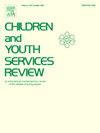Factors affecting interorganizational learning networks in youth care services: What do we know and what are the research gaps?
IF 1.7
2区 社会学
Q1 FAMILY STUDIES
引用次数: 0
Abstract
Background
Children with behavioral and psychological problems and their families often need integrated care involving innovative methods such as Signs of safety and Wrap-around care. The implementation of these methods depends on interdisciplinary collaboration and the capacity to learn and innovate by the professionals concerned, often participating in interorganizational learning networks. The aim of this scoping review is to provide an overview of the characteristics of learning organizations that affect the learning and innovative performance of interorganizational networks in youth care services.
Method
We used the databases Scopus, PsycInfo and PubMed. We included 24 of the 166 papers that emerged from our literature search. We subsequently used the High-Performance Organizations framework and its characteristics (organization design, strategy, process, technology, leadership, individuals and roles, culture, and external orientation) as a basis for analyzing the literature.
Results
The reviewed papers often stressed the importance of leadership, communication and culture for learning networks, but were less specific about the practical implementation of these factors. We also found less emphasis in the literature on the conditions required to organize learning networks, in particular the external orientation of networks and the use of technology.
Conclusion
The literature on factors that affect the learning and innovation potential of learning networks in youth care services is sparse. It focuses on common learning features and less on organizational conditions. There should be a particular emphasis on establishing competent workforces with excellent skills in the areas of cross-organizational collaboration and the use of technology. We advise more research into the impact of networks on the outcomes of youth care services.
影响青少年护理服务组织间学习网络的因素:我们知道什么?研究差距是什么?
有行为和心理问题的儿童及其家庭通常需要综合护理,包括创新方法,如安全标志和环绕式护理。这些方法的实施取决于跨学科的合作以及有关专业人员学习和创新的能力,这些专业人员经常参与组织间学习网络。这个范围审查的目的是提供学习型组织的特点,影响学习和创新绩效的组织间网络在青年护理服务的概述。方法采用Scopus、PsycInfo和PubMed数据库。我们收录了从文献检索中得到的166篇论文中的24篇。随后,我们使用高性能组织框架及其特征(组织设计、战略、流程、技术、领导、个人和角色、文化和外部导向)作为分析文献的基础。结果被审查的论文往往强调领导力、沟通和文化对学习网络的重要性,但对这些因素的实际实施却不太具体。我们还发现,文献中对组织学习网络所需条件的强调较少,特别是网络的外部导向和技术的使用。结论影响青少年照护服务学习网络学习和创新潜力的因素文献较少。它关注的是共同的学习特征,而不是组织条件。应该特别强调在跨组织协作和技术使用领域建立具有卓越技能的合格劳动力。我们建议对网络对青年护理服务结果的影响进行更多的研究。
本文章由计算机程序翻译,如有差异,请以英文原文为准。
求助全文
约1分钟内获得全文
求助全文
来源期刊

Children and Youth Services Review
Multiple-
CiteScore
6.30
自引率
6.10%
发文量
303
期刊介绍:
Children and Youth Services Review is an interdisciplinary forum for critical scholarship regarding service programs for children and youth. The journal will publish full-length articles, current research and policy notes, and book reviews.
 求助内容:
求助内容: 应助结果提醒方式:
应助结果提醒方式:


